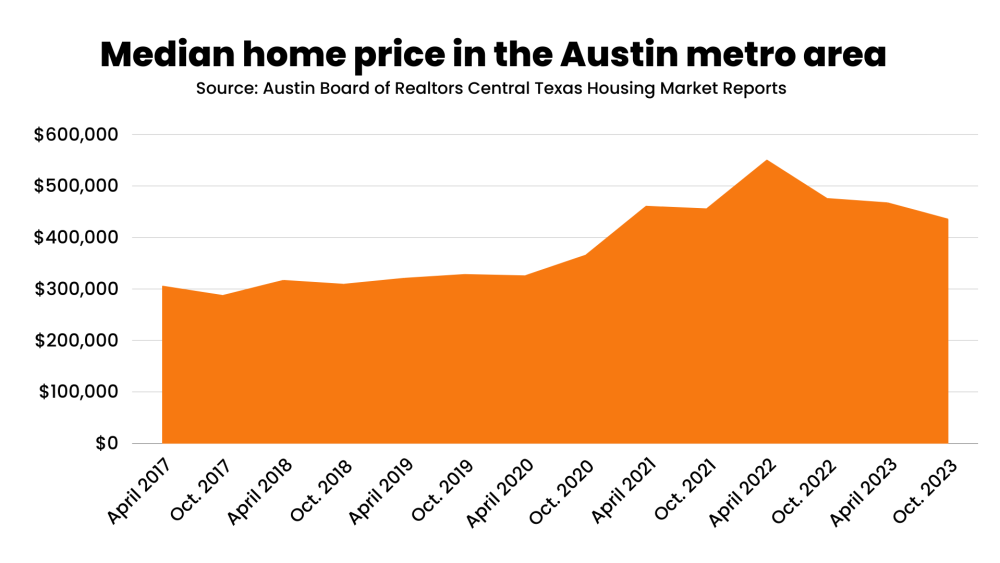The end of the year is a time for reflection. So, we’re reflecting — how has Austin’s economy changed in the last 12 months?
We pored through data from the Austin Chamber of Commerce to pull some stats on just how Central Texas’ boomtown has changed in the last year.
Editor’s note: Most recent data is from Oct. 2023, so the following stats compare October 2023 to October 2022.
Jobs
Non-farm jobs in Austin’s metro area grew on the whole last year (by ~2.8%), but a few industries saw the largest jumps:
- Construction & natural resources | 8.1% increase
- Education and health services | 5.6% increase
But not so fast, y’all. The largest employment pool remains in professional and business services, at ~294,900 employees (about 22% of the total.)
Unemployment
About 8,000 more people are unemployed in Austin now than last year, with the metro area’s unemployment increasing to 3.3%.
Of note: that number is still lower than the unemployment rate in Texas (3.8%) and the US (3.6%).

The median home price in October 2023 was $435,000.
Graphic by ATXtoday, data from Austin Board of Realtors
Housing
We’ve written a lot about housing this year, so we’ll keep this brief.
The past 12 months saw a flurry in construction and a fall in prices for Central Texas. Most notably:
- New privately owned housing units increased by 32.7%
- The median home price fell by 7.4%
- Housing inventory increased by 21.9%
Learn more about how Austin’s housing market is faring.
Office + industrial real estate
Although office space inventory is growing, its vacancy rate increased by more than 30% in the last year — currently, nearly 21 million sqft of office space is going unused in the Austin area.
Believe it or not, vacancy rates for industrial real estate grew at an even sharper pace, more than doubling to 11 million sqft of unused space.
Now, we want to hear your predictions for 2024. How do you think the Austin economy will change in the next year?











